-
Posts
3,873 -
Joined
-
Last visited
-
Days Won
10
Content Type
Profiles
Forums
Blogs
Gallery
Events
Store
Posts posted by Bob
-
-
http://gmic.co.uk/index.php?showtopic=28437&st=0&p=268612&hl=museum&fromsearch=1&#entry268612
http://gmic.co.uk/index.php?showtopic=24432&st=20&p=276387&hl=museum&fromsearch=1&#entry276387
http://gmic.co.uk/index.php?showtopic=15955&st=0&p=155495&hl=museum&fromsearch=1&#entry155495
0 -
http://gmic.co.uk/index.php?showtopic=31230
http://gmic.co.uk/index.php?showtopic=9125&st=40&p=294204&hl=museum&fromsearch=1&#entry294204
also included are some pics of the War Museum in Vlore, Albania
0 -
http://gmic.co.uk/index.php?showtopic=47396
0 -
http://gmic.co.uk/index.php?showtopic=47395
0 -
Even more via http://www.pseudology.org/Abel/Sorkin_NS.htm
One of the leaders of the Soviet military intelligence. Born in Kiev in a family servant. In 1919 graduated from Hebrew College.
Since 1919 - the Red Army. Member of the Civil War.
In 1920 he graduated from the Kharkov team artillery courses. In 1923 - artshkolu.
In 1923-26 - the instructor of the Mongolian army artillery.
In 1926-31 - Soviet consul in Altan-Bulak, Head. Consular Section of the embassy, the 1-st secretary of the embassy in Ulan Bator.
In 1933 he graduated from the training of military and diplomatic personnel.
In 1933-35 - the Red Army. Was at the disposal of the People's Commissar for Military and Naval Affairs and Chairman of the PBC, then People's Commissar of Defence.
In 1935 - before the NCID.
In 1936 - again in the Red Army, Deputy. Chief of the 9 th (Mongol-Xinjiang) of Razvedupra.
In 1939 - ID chief of special mission Razvedupra WPRA.
From 1941 to 1947 - the intelligence chief of the Far Eastern Front. Participant in the war with Japan.
From 02/11/1944 - Major-General.
In 1945 - head of the intelligence section 1 of the Far Eastern Front.
In 1947-50 - head of the Training Division of the Military Diplomatic Academy. After graduating from the Military Academy of the General Staff in 1952-58 - deputy. Head of the Department of the Air Force Engineering Academy.
From 1958 - retired.
Awarded the Order of Lenin, two of the Red Star and medals.
He graduated from Hebrew College (1914), an employee. In the Civic on the Denikin and the Polish front. He graduated from the Kharkov team training (1920) and the Artillery School (1923), served in the artillery. Instructor of Artillery in the Mongolian People's Army (1923-1926), Consul of the USSR in Altan-Bulak (Mongolia), head of the consular department, a secretary of the Soviet Embassy in Mongolia (1926-1931), a reserve NCID, editor for Mongolia in the 2 East and political department of the People's Commissariat (1931-1933). He graduated from the course of military-diplomatic staff (1933), available narkomvoenmora / Defense Commissar (1933-1935), Senior Assistant People's Commissariat of Mongolia (1935-1936), Deputy Head of Division 9 Razvedupra Red Army (1936-1937), Chief vrid 9 departments ( 1937-1939), Chief of General Staff of Red Army special assignments / Razvedupra Red Army General Staff (1939-1941), head of the intelligence / razvedupra Far Eastern Front / Region (1941-1947). Maj. Gen. (1944). Head of the Training Division of the Military-Diplomatic Academy (1947-1950). He graduated from the General Staff Military Academy (1952), Deputy Head of Department of the Air Force Academy. Since 1958, the first in retirement. Order of Lenin, two Orders of Red Banner, etc.
0 -
Nota Bene pointed me in the right direction, and google helped to expand on this.
The correct name appears (not certain) to be:
Sorkin, Naum Semenovitch, Major-General
(1899 – 1980)
CV
1923 - 1926 Artilleray Instructor (in Mongolia)
1926 - 1931 Deployed to Soviet Consulate/Embassy in Mongolia
1939 - 1941 Chief of Special Task Section, Directorate of Intelligece, General Staff
1941 - 1945 Chief Intelligence Officer Far Eastern Front
1945 Chief Intelligence Officer 1st Far Eastern Front
1945 - 1947 Chief Intelligence Officer Far Eastern Military District
1947 - 1950 Head of Educational Department, Military-Diplomatic Academy
1950 - 1952 Attending the Military Academy of the General Staff
1952 - 1958 Deputy Head of ? Faculty, Military Academy of Aviation Engineering
1958 Retired
Author of books, such as "V nachale puti. Zapiski instruktora mongolʹskoĭ armii."
Hopefully more to follow.
0 -
Got some help from Nota Bene to point me in the right direction and now have some more hints. It appears (but not 100% confirmed yet) that our man who received the document / red banner (also the other 2?) was a "big guy": a Major General in Soviet military intelligence... in fact, the top intelligence officer in the far east during WW2!

This will probably make research in the Russian archives difficult/impossible, but the initial clues appear to confirm this. More to come later.
0 -
Thanks to our forum friend Tsend (who like me wishes that the forum would be more alive!
 ) some additional information:
) some additional information:1) The document matches (e.g. references the serial nr 516) the Order of the Red Banner of Military Valor but does not mention the other two Red Banners (probably they'd have received seperate books anyway)
2) 516 was awarded on 18 April 1943 with the decree of the Small Khural of number 21
3) The handwritten brief text on the second page states "the order is awarded for the feat in defending the nation" (hmmm combat award?
 )
)4) The page number 3 bears the stamp of the Presidium of the Small Khural and the signatures of President Bumtsend and Secretary Bayar. On the remaining pages is the 1941 Regulation of the awards of the MPR.
5) The booklet has two full names on the page number 1. One name (unclear though) was crossed out and another added. The added full name stands for Sorkin Naum Sahanovich. This is perfectly in line with the faded inside cover writing in Cyrillic which appears to state Sorkin N.S. (or Copkin H.C. in cyrillic) although the last 2 letters are difficult to read. Indication is that a plausible scenario could for instance be that an error was made for instance when drafting multiple of such documents at the embassy in Moscow (e.g. name copied in two booklets from a list of award recipients, so had to be crossed out).
I have asked Nota Bene to try to get some research based on the name alone. Fingers crossed!

Thanks a lot for your help Tsend - very much appreciated :cheers:
0 -
Dear Bob,
You have a beautiful distinctive with case and a good document, but they are for different cases. The document is for the medal of expedition in Albania April 1939, but the distinctive is for the Italy-Greece War 1940-41.
If you are interested, I can display the correct certificate for your distinctive and the correct medal for your document.
Regards,
Artan
Hi Artan - thanks (although disappointing news) - would love to see the correct certiicate for the badge and the correct medal for my document :)
0 -
job isn't on the base, but i think you answered my question sufficiently :unsure:
0 -
Not an expert on soviet belts but i'd expect them to be genuine. Just too many of them produced to make faking it worthwhile. 25 USD seems a bit expensive to me though, but still it's a good story to tell: soviet belt bought in Afhanistan.
If you buy a handful rather than spending loads of money on it, downside risk really isn't that high.
By the way, how safe is it in Kabul nowadays for foreigners? I've been approached for a job there. A few years ago I was also approached for a job, didn't get it and the guy who did get it got shot in the head in a traffic jam, then they came back to me (but my salary demands had increased too much) and now they're back with me again. Just curious whether it's worth an adventure or whether it's russian roulette.
0 -
-
-
-
-
-
-
-
-
-
http://en.wikipedia.org/wiki/Military_Museum_of_the_Chinese_People's_Revolution
Visited this great museum around Xmas time. It was EXTREMELY cold (a Chinese colleague had told me it was nice and sunny in Beijing and I had neglected to look up what that would mean temperature wise... let's just say wearing a polo shirt with thin pullover was NOT sufficient, it did make a lot of Chinese smile at me because they thought i was crazy to walk around outside like that).
Anyway, in that bitter cold i rushed to checkout the Mao mausoleum and then to the military museum before heading back to the airpot for onwards flight to Australia (another great museum there: http://gmic.co.uk/index.php?showtopic=47395&pid=437139&st=0&#entry437139)
I think pics of the Beijing museum have been posted before, but not yet of the top floor which focusses on the Korean war. Interesting to read there that China came to the help of the Koreans attached by US, while reading in the Canberra museum a week later that it was the Ozzies who came to the help of Korea against the attach by the Chinese etc.)
Anyway - some DPRK relevant pics... all fake i think (unfortunately)
Any chinese translation help would be much appreciated - more than curious as to what made these guys earn their DPRK awards:)
0 -
I suspect this will be a case of praying for research (and hoping for a positive outcome!)
0 -
-




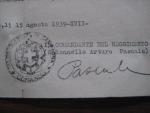



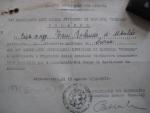
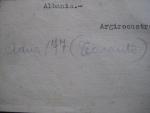
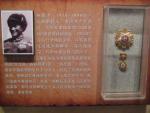
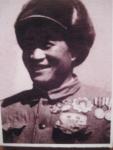
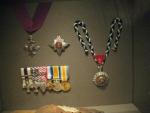
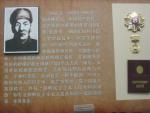


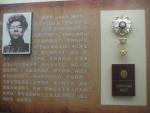
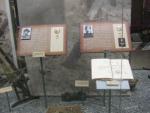

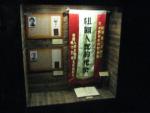
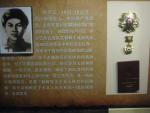
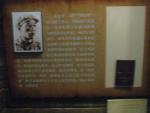

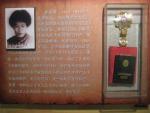
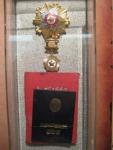
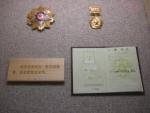
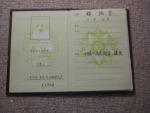
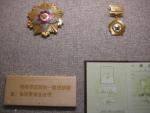
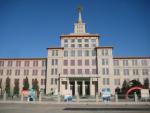


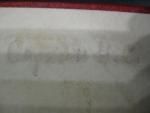
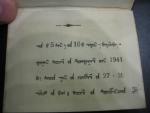
Ulaan Baatar, Mongolia: Mongolian Museum of History
in Museums & Shows
Posted
http://gmic.co.uk/index.php?showtopic=15955&st=0&p=155495&hl=museum&fromsearch=1&#entry155495